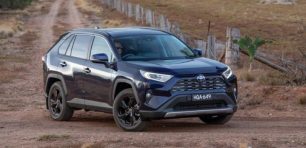
Source: Pexels/Andrea Piacquadio.
Utes, vans, and other light commercial vehicles should be excluded from the federal government’s emission reduction plans, the Housing Industry Association says, claiming tradespeople could face significant premiums when upgrading their vehicles under Canberra’s preferred reforms.
In an attempt to minimise the greenhouse gas emissions caused by Australian road users, the Department of Infrastructure, Transport, Regional Development, and the Arts is consulting with the community on its New Vehicle Efficiency Standard (NVES).
Australia and Russia are among the only advanced global economies not to have a fuel efficiency standard for road cars, which the federal government suggests leads to less-fuel-efficient vehicles on Australian roads, higher fuel expenses per vehicle, and significant greenhouse gas emissions.
The department shared its preferred NVES proposal in a consultation paper in April this year.
The proposal: catch up to US emissions standards by 2028, by imposing a CO2 emissions target on passenger vehicles and SUVs, with a higher target for utes, vans, and large, ‘American-style’ pickup trucks in the light commercial category.
Commercial vehicles, including those used by small businesses and tradespeople, are particularly important in the NVES discussion.
Data shows the Ford Ranger, Toyota Hilux, and Isuzu D-MAX — all utes, and all commonly used by tradespeople — were the three highest-selling car models in Australia over 2023.
“A NVES gives heavier cars a relatively higher CO2 target because it is recognised that some consumers (such as small businesses and trades people) legitimately need a bigger car for their work,” the consultation paper claims.
The discussion paper claimed that similar emissions standards worldwide have not resulted in price hikes, and that it costs light commercial vehicle manufacturers just $190 per ute or van to comply with heightened efficiency rules.
Nevertheless, the proposal to impose an emissions target on commercial vehicles has concerned employer groups, who say the NVES plan could leave tradespeople out of pocket — or out of options.
The HIA, which represents employers across the construction industry, revealed its submission this week.
It cites industry modelling that claims an NVES would actually lift the price of commercial vehicles.
The HIA also fears manufacturers could wind back commercial vehicle production to meet emission targets across their fleets.
“Applying stringent efficiency standards with harsh penalties will substantially drive up the price of these vehicles” in Australia, it said.
Tradies also have few options for EV utes in Australia, and those available in 2024 are considerably more expensive than their petrol- and diesel-powered competitors.
The HIA’s proposed solution: a carve-out for those commercial vehicles.
“A practical solution is to exclude utes, vans and other key light commercial vehicles purchased by tradespeople, regional Australians and emergency services from the aggregate fleet CO2 emissions reduction target applied to manufacturers,” it said.
Additionally, the HIA claims large 4WD drive vehicles, which would likely fall under the non-commercial C02 target, are in fact essential to many agricultural and tourism businesses.
Those views, and those of advocates calling for a rapid decarbonisation of Australian road vehicles, will now come under consideration.
The federal government says it will introduce legislation underpinning its NVES plan no later than January 1, 2025.
Handpicked for you

“Sleeper issue”: SMEs will soon be swept up under a new mandatory climate reporting regime



COMMENTS
SmartCompany is committed to hosting lively discussions. Help us keep the conversation useful, interesting and welcoming. We aim to publish comments quickly in the interest of promoting robust conversation, but we’re a small team and we deploy filters to protect against legal risk. Occasionally your comment may be held up while it is being reviewed, but we’re working as fast as we can to keep the conversation rolling.
The SmartCompany comment section is members-only content. Please subscribe to leave a comment.
The SmartCompany comment section is members-only content. Please login to leave a comment.